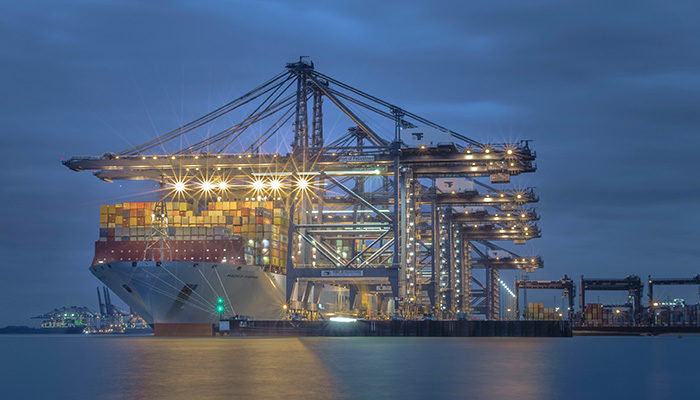The global fleet has grown this year, but at various speeds for different ship markets, while the main differentiating factor moving forward is expected to be the rate of renewal, via the orderbook. In its latest weekly report, shipbroker xClusiv Shipbrokers said that “while Santa Claus has come down the chimney for some, the Chinese authorities have made an early gift to the global economy. China will no longer subject inbound travellers to quarantine from January 8th 2023, putting the country on track to emerge from three years of self-imposed global isolation under a zero COVID policy that battered the economy and stoked historic public discontent. People arriving in China will only be required to obtain a negative COVID test result within 48 hours of departure, according to a statement from the National Health Commission Monday. This is another hope for a faster economic recovery of China and its return to prepandemic economic activity”.
According to xClusiv, “as the shipping market is getting ready to welcome 2023, we take the opportunity to make a review of the active fleet and orderbook at the sunset of 2022 for dry bulk, tanker, container and LPG/LNG markets. Compared to the same period of 2021, we analysed the overall fleet and orderbook for each category and made some observations. In the dry bulk market, in December 2021, the total fleet was 12,675 vessels, while the orderbook was 757 vessels, which equates to a 5.9 % orderbook to fleet ratio. Although the current fleet has increased by 3.4% to 13,107 vessels, the orderbook has increased by around 18% to 899 orders (6.8% orderbook to fleet ratio). The alternative fuels capable & ready fleet accounts for 105 vessels, which equates to around 0.8 % of the total bulk carrier fleet. In the orderbook, alternative fuel capable vessels are around 5% (44) out of total dry orderbook, while the alternative fuel ready account for 3.5% (31), summing 9.5% compared to just 7.9% last year”.
The shipbroker added that “a similar increase was noted also in the container market. The fleet accounts for 5,789 vessels currently, up by around 4% compared to December 2021 when the fleet was 5,577 vessels. The orderbook has increased from 723 to 928 vessels today (up by 28%) which equates to an increase in orderbook to fleet ratio from 13% to 16% currently. 167 vessels out of the total current container fleet are alternative fuel ready and capable (3%). In the orderbook, those numbers are far better, since 338 vessels are either alternative fuel capable or ready (which equates to 36%), with the former accounting for 188 vessels (20%), while the latter being 150 vessels (16%). Back in December 2021, 22% of the container orders were able to burn alternative fuel”.
Meanwhile, xClusiv noted that “in the tanker market, the active fleet (>= 10,000 DWT) has increased by around 2% to 7,413 vessels, while back in December of 2021 the tanker fleet was 7,244 vessels. However, the orderbook has decreased significantly by around 46% to 317 vessels as of today. In other words, the orderbook to fleet ratio has plunged from 8.1% to 4.2%. The tanker fleet is poised to shrink in the following years mainly because of the fact orderbook touches its lowest levels since 1996, but also because vintage vessels are a big part of the total tanker fleet (the vessels older than 20 years are 635 vessels, 8.5% of the active fleet). In the fleet, 163 vessels out of 7,413 are capable or ready for alternative fuels (2.1%) while in the orderbook the ratio is quite higher at 31.5% (100 vessels), almost the same level compared to December 2021 (30%), which is the best ratio between the orderbooks of the different vessel types. However, we should take into account that this is mainly because of the very low orderbook in the tanker segment”.
“Last but not least, in the LPG and LNG sector, the active fleet accounts for 2,302 vessels, while back in December 2021 was 2,198 vessels (up by 4.7%). The orderbook has soared by 39% to 469 orders (as back in December 2021 the vessels in order were 337), reflecting an increase in orderbook to fleet ratio from 15% in December 2021 to 20% currently. It is interesting to note that a significant consistency towards the zero-emission goal is shown in the LPG/LNG orderbook with 90% of these being capable or ready to use alternative fuels, a slight increase of 4.6% compared to the same period past year”, the shipbroker said.
Xclusiv concluded that “in the dawn of 2023 the new CII policy will be activated, based on the Shipping industry’s strategy for zero CO2 emissions. Meanwhile numbers never lie and the orderbook is the evidence that there is not an alternative fuel technology that has convinced owners for its effectiveness in order to invest in it. As alternative fuel capable vessels are a minority in the orderbook and alternative fuel ready vessels are fewer, the need of great innovations and decisions is imminent if shipping industry wants to achieve its milestone targets”.
Source: Hellenic Shipping News





